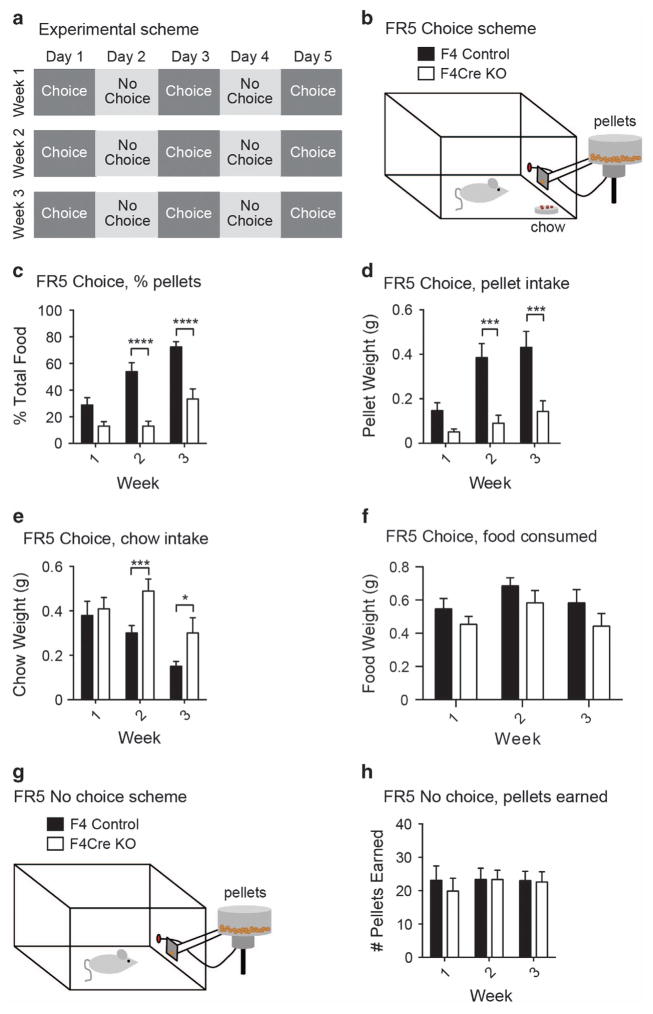Figure 4.
Inhibition of glutamatergic input onto dopamine (DA) neurons suppresses animal motivation in an effort-based choice task. (a) Scheme for the 3-week effort assessment. (b–h) Set-up of the chambers on the choice days (Days 1, 3 and 5 each week) (b). Animals had free access to standard lab chow and could also respond in the nose-poke port (FR5) for chocolate food pellets. (c) In the Choice sessions, the chocolate pellets constituted a lower percentage of total food consumed for F4Cre relative to F4 mice (****P < 0.0001). (d) During the Choice sessions, F4Cre animals responded for fewer pellets than the F4 mice (***P < 0.001). (e) F4Cre mice consumed a greater amount of chow during Choice days than the F4 animals (*P < 0.05, ***P < 0.001). (f) During the Choice sessions, no differences were seen in total food consumed. (g) Set-up of the operant chambers on the non-choice days (Days 2 and 4 each week). Animals could respond in the nose-poke port (FR5) for chocolate food pellets. No other food was available in the operant chambers. (h) On the non-choice days, the two groups showed similar rates of responding. (F4 n =10; F4Cre n =10). (*P < 0.05, **P < 0.01, ***P < 0.001 and P ≥ 0.05, no significance). All data were presented as mean ±s.e.m. FR, fixed ratio; KO, knockout.

